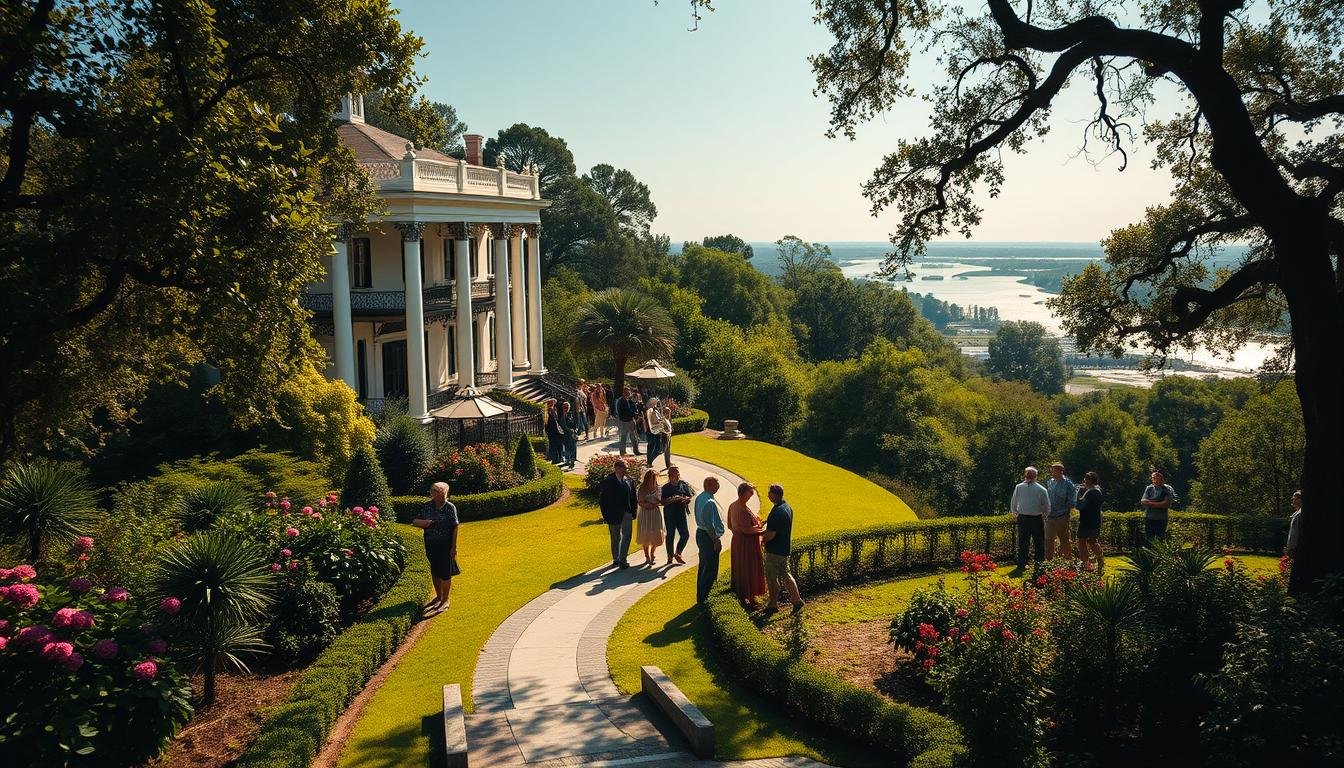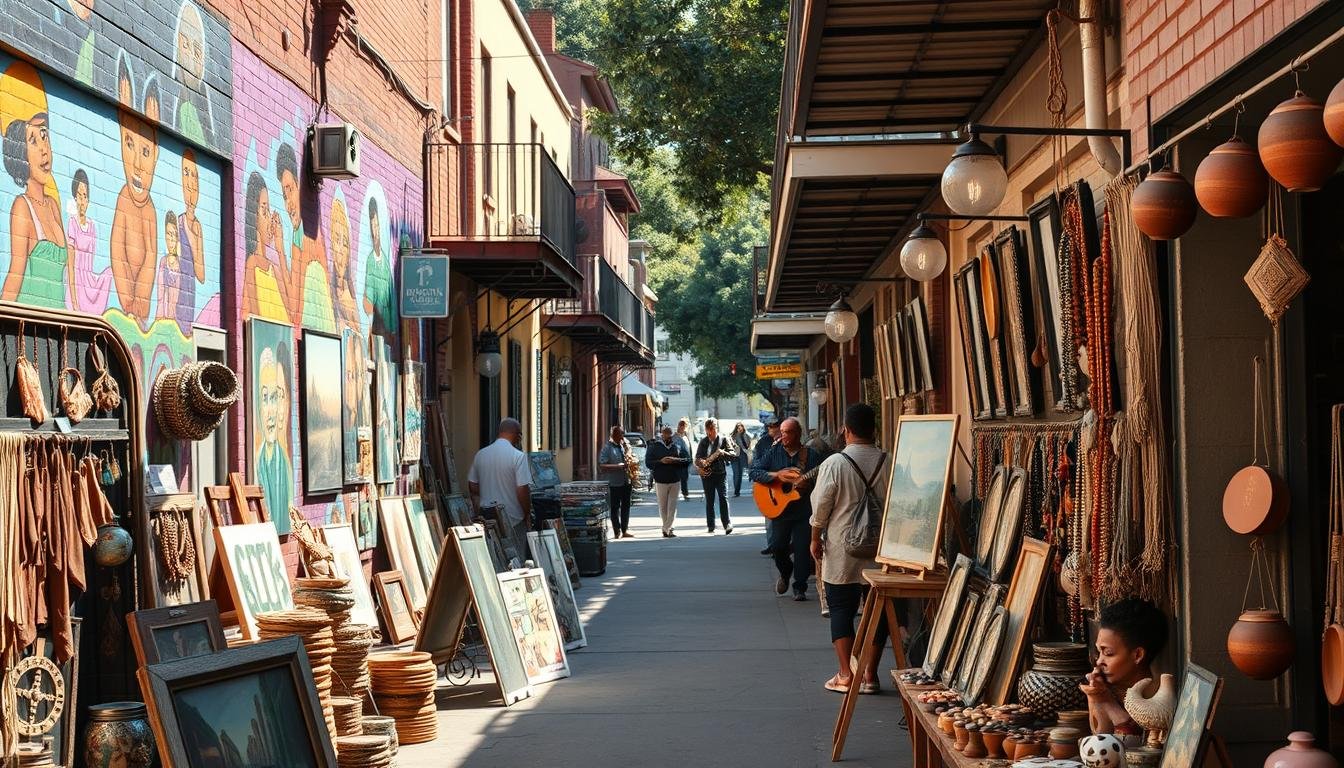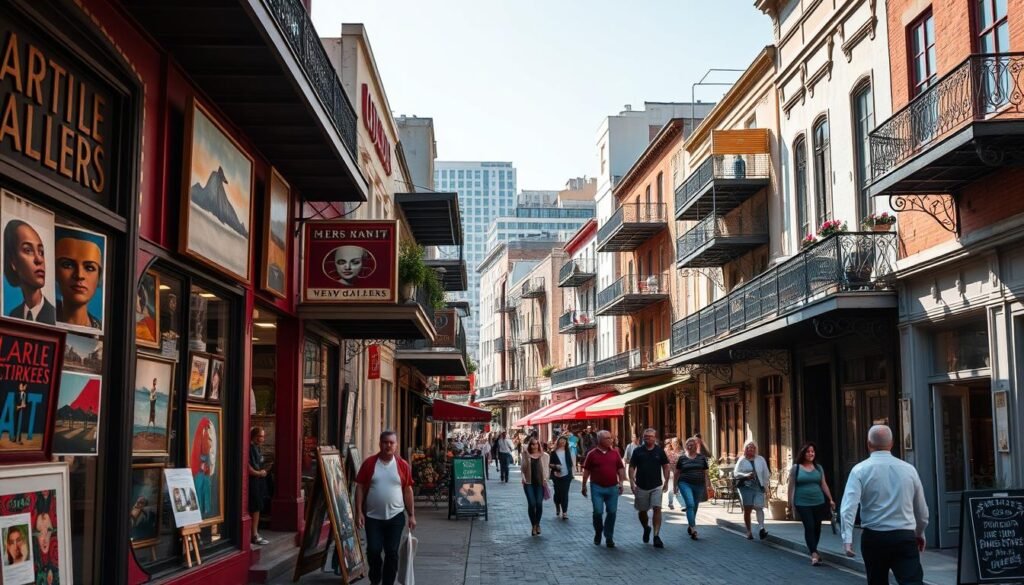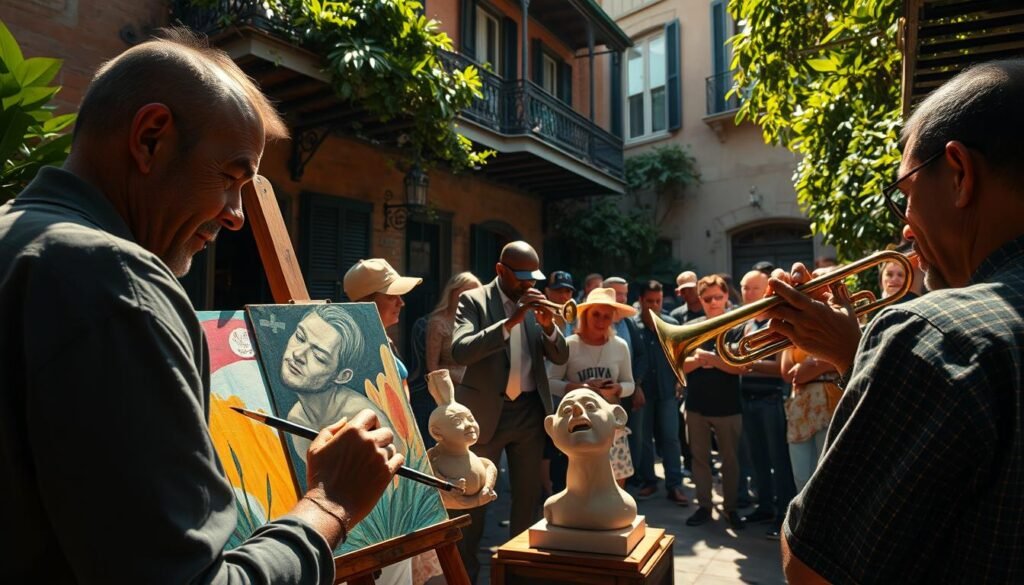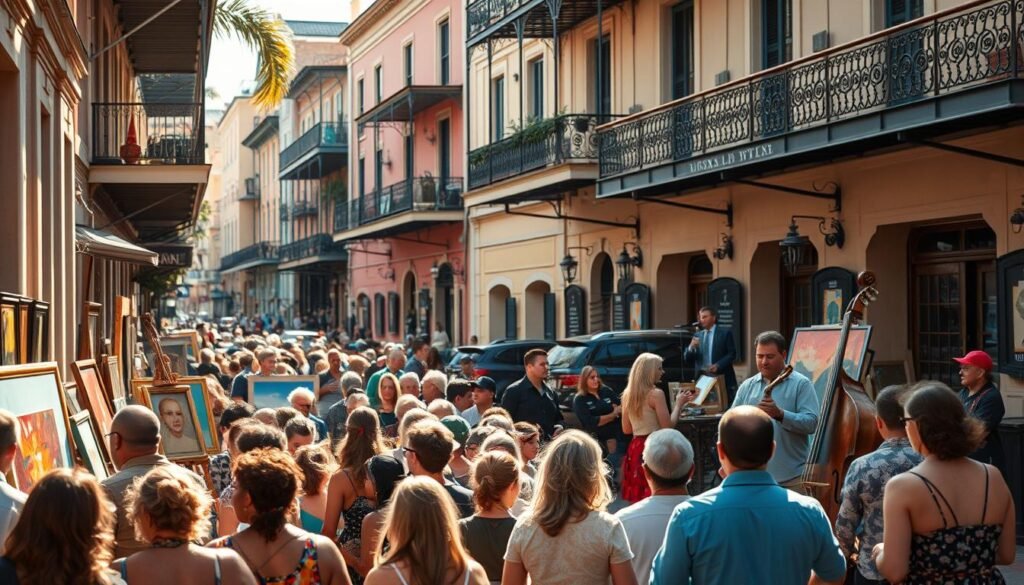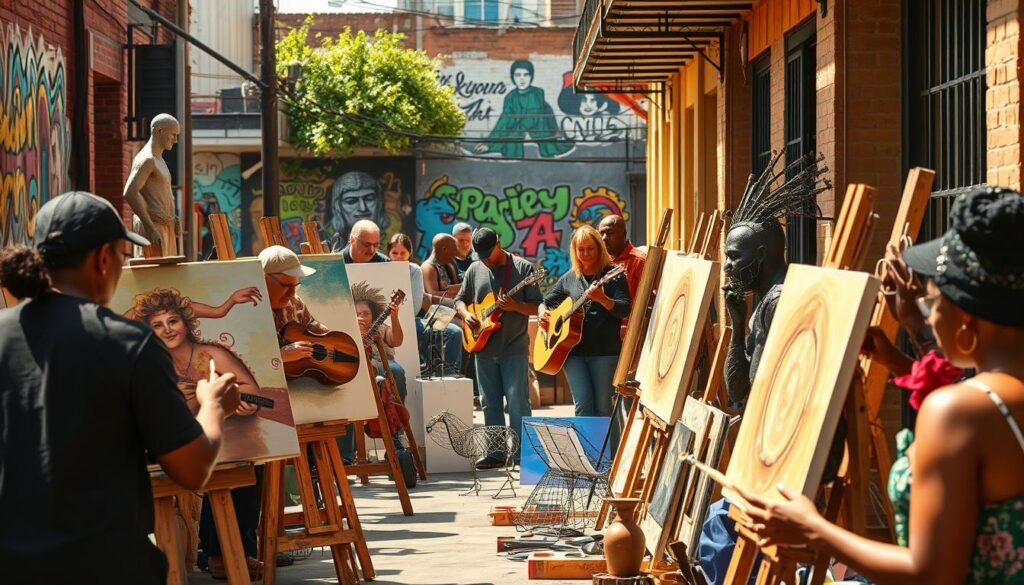As a local insider, I’m excited to share with you the rich history and culture of New Orleans through its plantation tours. Imagine stepping into the past, surrounded by majestic oak trees and grand antebellum mansions.
Our plantation tours offer a unique glimpse into the city’s storied past, blending traditional wisdom with a modern outlook. You’ll experience the whispers of history and get to immerse yourself in the past like never before.
Key Takeaways
- Discover the best plantation tours in New Orleans
- Learn what to expect from these historical experiences
- Understand why they’re a must-see for an authentic New Orleans experience
- Explore the rich history and culture of the region
- Get insider tips on making the most of your visit
Introduction to New Orleans Plantation Tours
Discover the fascinating world of New Orleans plantation tours, an immersive experience that blends history, architecture, and Southern charm. These tours are more than just a historical excursion; they’re a journey through the complex past of the region, offering insights into the cultural heritage and historical significance of the plantations.
New Orleans plantation tours provide a unique perspective on the city’s history and culture, showcasing grand antebellum mansions, beautifully maintained gardens, and the complex history of the plantation era. From the grandeur of Oak Alley to the haunting beauty of Whitney Plantation, each tour offers a distinct experience.
Here’s a brief overview of what you can expect from the best plantation tours in New Orleans:
| Plantation | Historical Significance | Tour Highlights |
|---|---|---|
| Oak Alley | Iconic Greek Revival architecture | Guided tours of the mansion, oak-lined entrance |
| Whitney | Focus on the history of slavery | Museum exhibits, memorials to the enslaved |
| Laura | Creole heritage and history | Guided tours, cultural exhibits |
These New Orleans plantation tours not only educate visitors about the region’s history but also provide a deeper understanding of the cultural nuances that have shaped the South. Whether you’re a history buff, an architecture enthusiast, or simply looking for a unique experience, the best plantation tours in New Orleans have something to offer.
The History Behind the Plantations
As you step into the grand antebellum mansions of New Orleans’ plantations, you’re not just walking into homes – you’re stepping into the very fabric of American history. These plantations, with their stunning architecture and lush gardens, were once the epicenters of economic and social life in the antebellum South.
Their history is complex, marked by both grandeur and hardship. To truly understand their significance, we need to explore their role in American history and the impact of major historical events on these estates.
The Role of Plantations in American History
Plantations played a pivotal role in shaping American history, from the colonial era through the Civil War and beyond. They were not only economic powerhouses, relying heavily on agriculture and slave labor, but also hubs of cultural and social activity. The influence of these plantations can still be seen in the modern-day culture of the South.
The economic might of these plantations was largely built on the backs of enslaved Africans, who brought with them their culture, traditions, and skills. This cultural melting pot significantly contributed to the development of the region’s unique Creole and Cajun heritage.
Major Historical Events and Their Impact
The plantations around New Orleans were witness to several major historical events that shaped not only their own destiny but also that of the nation. The Civil War, for instance, had a profound impact on these estates, many of which were destroyed or severely damaged during the conflict.
The Reconstruction era that followed brought about significant changes, including the emancipation of slaves. However, the legacy of slavery and the economic structures it supported continued to influence life on these plantations for generations to come.
| Historical Event | Impact on Plantations | Legacy |
|---|---|---|
| Civil War | Destruction of many plantations, loss of slave labor | Economic hardship, shift towards sharecropping |
| Reconstruction | Emancipation of slaves, social change | Continued racial tensions, economic challenges |
| Industrialization | Decline of agricultural economy, diversification | Tourism development, preservation efforts |
Today, these plantations serve as a reminder of the complex history of the United States, offering historic plantation tours that allow visitors to step back in time and understand the multifaceted history of the region. Whether you’re interested in southern plantation tours or New Orleans history tours, there’s a wealth of information and experiences waiting to be discovered.
Popular Plantation Tour Options
New Orleans is renowned for its historic plantations, offering a range of captivating tour experiences. These sites not only showcase stunning architecture but also provide a deep dive into the region’s complex history and cultural heritage.
Let’s take a closer look at some of the most popular plantation tour options:
Oak Alley Plantation
Oak Alley Plantation is a quintessential example of Greek Revival architecture, with its majestic oak-lined entrance being a photographer’s paradise. This top-rated plantation tour offers a glimpse into the lives of the plantation owners and the enslaved people who worked there.
Laura Plantation
Laura Plantation stands out for its unique Creole and Cajun heritage. This guided plantation tour provides an immersive experience, exploring the history and culture of the region through the stories of the people who lived and worked on the plantation.
Houmas House Plantation
Houmas House Plantation is a sprawling estate that has been beautifully preserved and restored. Visitors can enjoy a must-see plantation tour that includes the historic mansion, gardens, and outbuildings, offering a comprehensive look at plantation life.
Whitney Plantation
Whitney Plantation is dedicated to the history of slavery and its impact on the region. This plantation tour is a powerful and moving experience, providing a unique perspective on the lives of enslaved people and the legacy of slavery.
To help you plan your visit, here’s a comparison of these popular plantations:
| Plantation | Main Attraction | Tour Type |
|---|---|---|
| Oak Alley | Greek Revival Architecture | Self-Guided |
| Laura | Creole and Cajun Heritage | Guided |
| Houmas House | Historic Mansion and Gardens | Self-Guided/Guided |
| Whitney | History of Slavery | Guided |
Each of these plantations offers a unique perspective on the history and culture of New Orleans. Whether you’re interested in architecture, history, or cultural heritage, there’s a top-rated plantation tour waiting for you.
What to Expect on Your Tour
As you plan your visit to the plantations near New Orleans, you’re probably wondering what the experience will be like. I’ve been on my fair share of these tours, and I’m excited to share some insider tips to help you make the most of your trip.
Guided vs. Self-Guided Tours
One of the first decisions you’ll need to make is whether to opt for a guided tour or explore on your own. Guided tours offer a wealth of knowledge from experienced guides who can bring the history of the plantation to life. For instance, at Whitney Plantation, guides provide detailed insights into the lives of the enslaved people who lived and worked on the plantation. On the other hand, self-guided tours give you the flexibility to explore at your own pace, spending as much time as you like in your favorite spots.
As someone who’s spent years exploring these plantations, I can tell you that guided tours often reveal hidden gems and unexpected stories that you might miss on your own. However, self-guided tours can be a great option if you’re looking for a more relaxed experience or want to revisit certain areas.
Duration and Itinerary
The duration and itinerary of your tour can vary significantly depending on the plantation and your interests. Some tours might be a couple of hours, while others can take up a whole day. For example, a visit to Oak Alley Plantation can be a quick stop, but if you want to explore the grounds, take photos, and enjoy the museum, you’ll want to allocate at least half a day.
When planning your day, consider the travel time between plantations and New Orleans. Some tour packages include transportation, which can be a convenient option. As I always say, “The journey is part of the experience,” so be sure to factor in time to enjoy the scenic views along the way.
Special Events and Seasonal Tours
Many plantations also offer special events and seasonal tours, adding an extra layer of depth to your visit. Imagine attending a Creole Christmas celebration at Houmas House Plantation, complete with decorations, music, and traditional cuisine. These events can be a fantastic way to experience the local culture and history in a unique and memorable way.
Some plantations host reenactments, festivals, or workshops that can enhance your understanding and appreciation of the site. Be sure to check the plantation’s calendar when planning your visit to catch one of these special events.
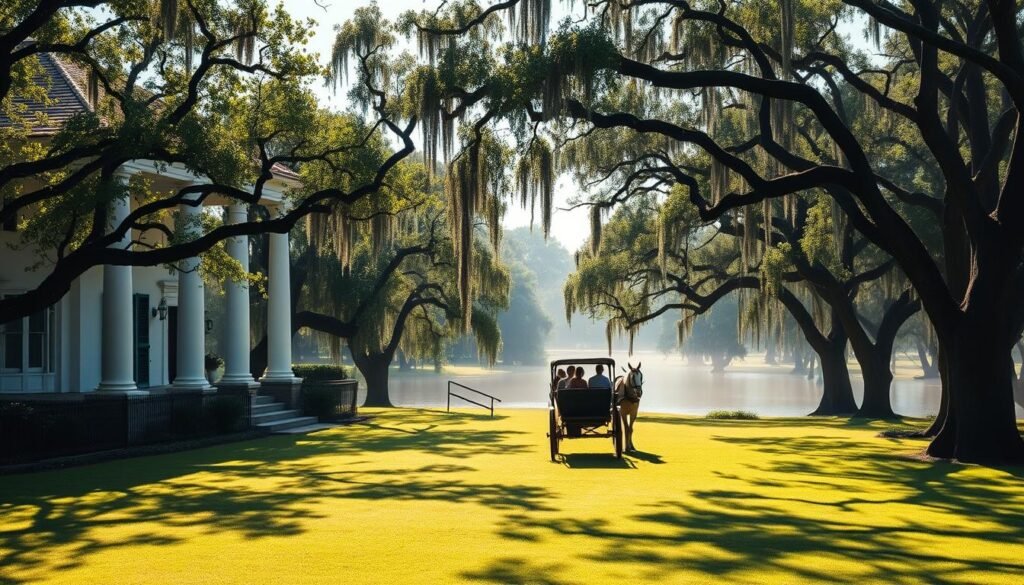
By understanding what to expect on your tour, you can better prepare for an enriching experience that will leave you with lasting memories of the plantations near New Orleans.
The Cultural Significance of Plantations
New Orleans plantations are not just relics of the past; they’re vibrant cultural landmarks that continue to shape the identity of the region. As we explore these historical sites, we uncover the rich tapestry of Creole and Cajun heritage that has influenced the area for centuries.
Exploring Creole and Cajun Heritage
The plantations around New Orleans are a gateway to understanding the unique cultural blend that defines the region. The Creole and Cajun communities have left an indelible mark on the area, influencing everything from the local cuisine to the music and traditions. For instance, the iconic beignets and jambalaya are more than just dishes; they’re a testament to the cultural melting pot that has shaped New Orleans.
Some key aspects of Creole and Cajun heritage include:
- Language: The influence of French, Spanish, and African languages on the local dialect.
- Culinary Traditions: The blend of cooking techniques and ingredients that give rise to distinctive Creole and Cajun cuisine.
- Music and Dance: The role of jazz, zydeco, and other musical styles in shaping the cultural identity of the region.
The Impact on Modern Southern Culture
The cultural significance of New Orleans plantations extends far beyond their historical importance; they continue to influence modern Southern culture in profound ways. From the food we eat to the stories we tell, the legacy of these plantations is woven into the fabric of daily life in the South.
| Cultural Element | Historical Influence | Modern Impact |
|---|---|---|
| Culinary Traditions | Blend of African, French, and Native American cooking techniques | Development of Creole and Cajun cuisine, influencing restaurants and home cooking |
| Music and Dance | African rhythms and European instrumentation | Jazz, zydeco, and other genres continue to shape local music scenes |
| Language and Storytelling | Multilingual heritage influencing local dialect and narrative traditions | Rich storytelling culture, reflected in literature and oral traditions |
By exploring the cultural significance of New Orleans plantations, we gain a deeper understanding of the complex historical and cultural forces that have shaped the region. This understanding not only enriches our appreciation of the past but also informs our experience of the present, highlighting the enduring legacy of these remarkable sites.
Activities Beyond the Tours
Beyond the historic mansions, New Orleans plantations offer a wealth of activities to enrich your visit. As you explore these stunning estates, you’ll discover that the beauty and charm extend far beyond the plantation houses themselves.
Exploring Gardens and Outdoor Spaces
The gardens and outdoor spaces at New Orleans plantations are truly breathtaking. Many of these historic sites boast centuries-old oak trees, vibrant flowers, and tranquil water features that create a serene atmosphere. For instance, Oak Alley Plantation is famous for its picturesque oak-lined entrance, while Laura Plantation offers a glimpse into the history of the region through its Creole-style gardens.
Visitors can take leisurely strolls through these beautifully maintained gardens, enjoying the natural beauty and the historical significance of the landscapes. Some plantations also offer guided tours of their gardens, providing insight into the horticultural practices of the past and the role these gardens played in the plantation’s history.
| Plantation | Garden Highlights | Special Features |
|---|---|---|
| Oak Alley Plantation | Oak-lined entrance, Southern gardens | Historic oak trees |
| Laura Plantation | Creole-style gardens, native plants | Guided garden tours |
| Houmas House Plantation | Rose gardens, walking trails | Scenic views of the Mississippi |
On-Site Culinary Experiences
New Orleans is renowned for its cuisine, and many plantations offer on-site culinary experiences that allow you to sample the region’s renowned dishes. From traditional Southern comfort food to Creole cuisine, these culinary experiences are a delicious way to deepen your understanding of the local culture.
Some plantations feature on-site restaurants that serve meals made with fresh, locally sourced ingredients. Others offer cooking classes or demonstrations, where you can learn the secrets of Creole and Cajun cooking from experienced chefs. For example, Houmas House Plantation has a restaurant that serves a range of Southern favorites, while Whitney Plantation offers cooking demonstrations as part of its tour experience.
Whether you’re a foodie or just looking to enjoy some good Southern hospitality, the on-site culinary experiences at New Orleans plantations are not to be missed.
Tips for Booking Your Plantation Tour
As a local, I’m excited to share my knowledge on how to book the best plantation tours in New Orleans, ensuring you get the most out of your visit. Planning ahead is crucial, whether you’re looking for a relaxing day out or an immersive historical experience.
Best Times to Visit
Timing is everything when it comes to visiting New Orleans plantations. The best times to visit are typically during the spring (March to May) and autumn (September to November), when the weather is mild and the crowds are smaller compared to the peak summer months. If you’re looking for a more serene experience, consider visiting on weekdays instead of weekends.
Many plantations also host special events during these periods, such as reenactments, festivals, and holiday-themed tours, which can add an extra layer of enjoyment to your visit. Be sure to check the plantation’s calendar before booking your tour.
Group Discounts and Packages
If you’re traveling with family or friends, taking advantage of group discounts can be a great way to save money. Many plantations offer discounted rates for groups of a certain size, so it’s worth inquiring about these when booking. Additionally, some tour operators offer top-rated plantation tours that include multiple plantations in one itinerary, which can be both convenient and cost-effective.
When booking, ask about any available packages that might include extras like guided tours, access to special events, or even meal packages. Some plantations also offer combo tickets that include admission to other local attractions, providing a comprehensive New Orleans experience.
Transportation Options to Plantations
When planning your trip to the plantations, you’ll have a few transportation options to consider – each with its own advantages.
Shuttle Services Available
Many tour operators offer shuttle services, making it easy to visit multiple plantations in one day without the hassle of driving. These services are particularly convenient if you’re staying in New Orleans and want to explore the surrounding areas.
Some popular tour companies offer shuttle services that include guided tours of the plantations. This can be a great option if you’re short on time or prefer not to drive.
Shuttle Service Comparison
| Tour Company | Frequency | Includes Guide |
|---|---|---|
| Oak Alley Tours | Daily | Yes |
| Laura Plantation Tours | Weekends | Yes |
| Whitney Plantation Tours | Daily | No |
Car Rentals vs. Tours
Alternatively, you might consider renting a car to explore the plantations at your own pace. This gives you the flexibility to create your own itinerary and stop at any attractions along the way.
Renting a car can be a good option if you plan to visit multiple plantations or want to explore other areas of Louisiana. However, keep in mind that driving between plantations can take time, and you might miss out on some of the historical context and insights that guided tours provide.
“Renting a car allowed us to explore the plantations at our own pace, and we enjoyed the freedom to stop whenever we wanted.” – Visitor testimonial
As you weigh your transportation options, consider what’s most important to you: convenience, flexibility, or a guided experience. Either way, you’re sure to have a memorable visit to the plantations near New Orleans.
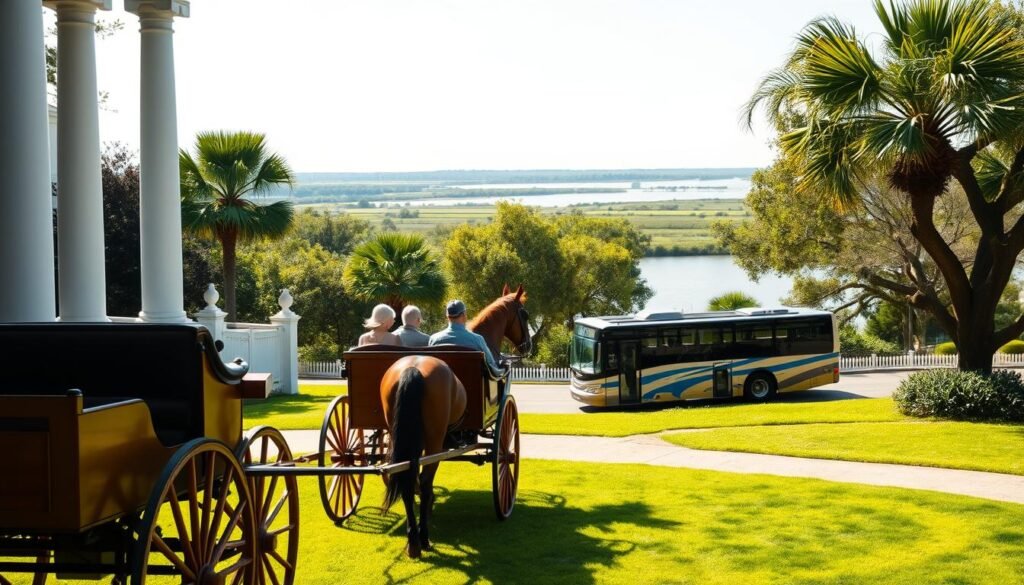
Photography Guidelines on Plantation Tours
New Orleans plantations offer a photographer’s paradise, with stunning architecture, beautiful gardens, and a rich history waiting to be told through your lens. As you explore these historical sites, you’ll want to capture their essence while being mindful of the rules and respect for the property.
Best Spots for Photos
From the grand entrances of the mansions to the serene beauty of the oak-lined pathways, there’s no shortage of picturesque spots. The gardens, with their vibrant flowers and tranquil water features, make for particularly compelling photographs. Don’t forget to capture the intricate details of the architecture, such as the ornate columns and beautifully crafted doorways.
For the best shots, consider visiting during the golden hour, just before sunset, when the soft light enhances the beauty of the surroundings. Experiment with different angles and perspectives to add depth to your photos. And remember, some plantations may have specific areas restricted from photography, so be sure to check with your tour guides.
Respecting Historical Sites
While capturing memories is encouraged, it’s equally important to respect the historical integrity and current use of these plantations. This means adhering to any photography rules provided by the tour staff, such as not using drones or tripods in certain areas, and not disrupting other visitors or ongoing events.
Tips for Respectful Photography:
- Be mindful of other visitors and avoid blocking pathways or exhibits.
- Refrain from using flash or other equipment that might damage artwork or artifacts.
- Follow instructions from plantation staff regarding restricted areas.
By being considerate and following the guidelines, you can enjoy capturing the beauty of these historical sites while preserving their integrity for future generations.
Family-Friendly Plantation Tours
As a local, I can tell you that family-friendly plantation tours are a great way to spend quality time with your loved ones while exploring the history of New Orleans. Many plantations in the area offer a range of activities and educational programs designed specifically for children, making them an excellent way to introduce kids to history and culture.
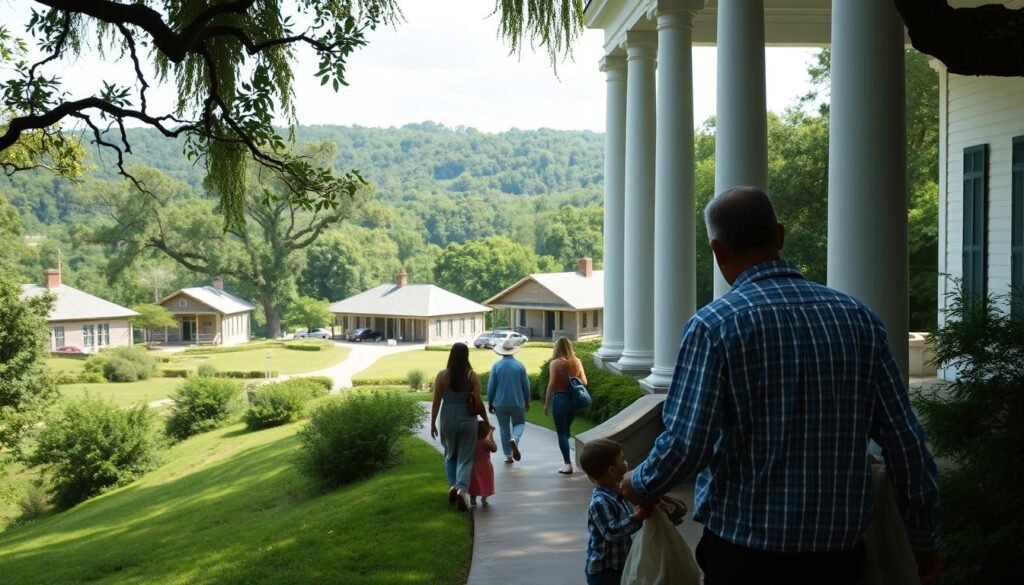
Activities for Children
Plantations near New Orleans have stepped up their game when it comes to keeping kids engaged. You’ll find a variety of activities designed to educate and entertain children. For instance, some plantations offer:
- Guided tours specifically designed for families
- Hands-on activities, such as traditional crafts and cooking demonstrations
- Scavenger hunts that encourage kids to explore the grounds
- Reenactments of historical events that bring history to life
These activities not only make the tour more enjoyable for kids but also help them learn about the history and culture of the region in a fun and interactive way.
Educational Opportunities
Plantation tours offer a unique opportunity for children to learn about the region’s history, culture, and traditions. Many plantations provide educational programs that align with state curriculum standards, making them a valuable resource for families and educators alike. Some of the educational opportunities include:
- Learning about the history of the plantation and its role in the region’s agricultural past
- Exploring the cultural heritage of the people who lived and worked on the plantation
- Discovering the importance of the Mississippi River and its impact on the region’s development
For more information on planning your family-friendly plantation tour, you can visit https://www.crazyfamilyadventure.com/new-orleans-plantation-tours/ to explore the various options available.
Environmental Responsibility and Sustainability
The beauty of Louisiana’s plantations is undeniable, but what’s equally impressive is the growing emphasis on environmental stewardship. As visitors explore these historic sites, they’re not just stepping into the past; they’re also witnessing a commitment to sustainability that shapes the future.
Eco-Friendly Practices at Plantations
Many plantations around New Orleans are embracing eco-friendly practices that minimize their environmental footprint. From sustainable farming techniques to energy-efficient operations, these efforts are crucial in preserving the plantations for generations to come.
Some plantations have taken significant steps in this direction, such as:
- Implementing organic farming practices to reduce chemical use
- Utilizing renewable energy sources like solar power
- Conserving water through efficient irrigation systems
- Promoting biodiversity by preserving natural habitats
Supporting Local Conservation Efforts
Visitors can play a vital role in supporting local conservation efforts by choosing plantations that prioritize sustainability. By doing so, they contribute to the preservation of these historical sites and the surrounding ecosystems.
Moreover, many plantations are involved in broader conservation initiatives, such as protecting wetlands, restoring native species, and collaborating with local organizations to promote environmental education.
As we enjoy the grandeur of these plantations, it’s heartening to see the strides being made towards environmental responsibility. It’s a testament to the potential for harmony between preserving our heritage and protecting our planet.
Local Recommendations: Where to Eat
After exploring the historic plantations around New Orleans, you’ll crave the rich flavors of local Southern cuisine. The area is renowned for its culinary delights, blending French, Spanish, and African influences into a unique gastronomic experience.
The plantations themselves often have on-site dining options, but there are also plenty of local eateries near these historic sites that are worth visiting. Let’s dive into some recommendations for dining near popular plantations and highlight the local Southern cuisine you simply must try.
Dining Near Popular Plantations
When visiting Oak Alley Plantation, be sure to head into Vacherie or nearby towns for some authentic local dining. Jacques-Imo’s in New Orleans is a great example of Creole cuisine done right, with dishes that are as visually stunning as they are delicious.
“New Orleans is the melting pot of the culinary world, where every dish tells a story of the city’s rich history and cultural diversity.” –
Near Laura Plantation, you can find Deanie’s Seafood, a local favorite that serves up fresh seafood with a Southern twist. For those visiting Houmas House Plantation, The Chimes in Baton Rouge is a short drive away and offers a contemporary take on traditional Louisiana dishes.
- Oak Alley Plantation: Try Oak Alley General Store for some local snacks and treats.
- Laura Plantation: Head to Cafe Maspero for Creole coffee and pastries.
- Houmas House Plantation: Visit The Houmas House restaurant on site for a farm-to-table experience.
Local Southern Cuisine You Must Try
Southern cuisine is known for its comfort food, and New Orleans is the epicenter of this culinary tradition. Be sure to try some of the local specialties like gumbo, jambalaya, and beignets. These dishes are not just meals; they’re experiences that connect you to the history and culture of the region.
| Dish | Description | Recommended At |
|---|---|---|
| Gumbo | A hearty soup made with a combination of ingredients like okra, rice, and a variety of meats and seafood. | Dooky Chase’s Restaurant |
| Jambalaya | A one-pot dish filled with sausage, rice, and a mix of meats and seafood, showcasing the flavors of Louisiana. | Jacques-Imo’s |
| Beignets | Fried dough pastries covered in powdered sugar, perfect for a sweet treat. | Cafe du Monde |
For a truly immersive culinary experience, consider visiting during one of the many food festivals that take place throughout the year in New Orleans. The New Orleans Jazz & Heritage Festival is a must-visit for any food enthusiast, featuring a wide range of local cuisine and live music.
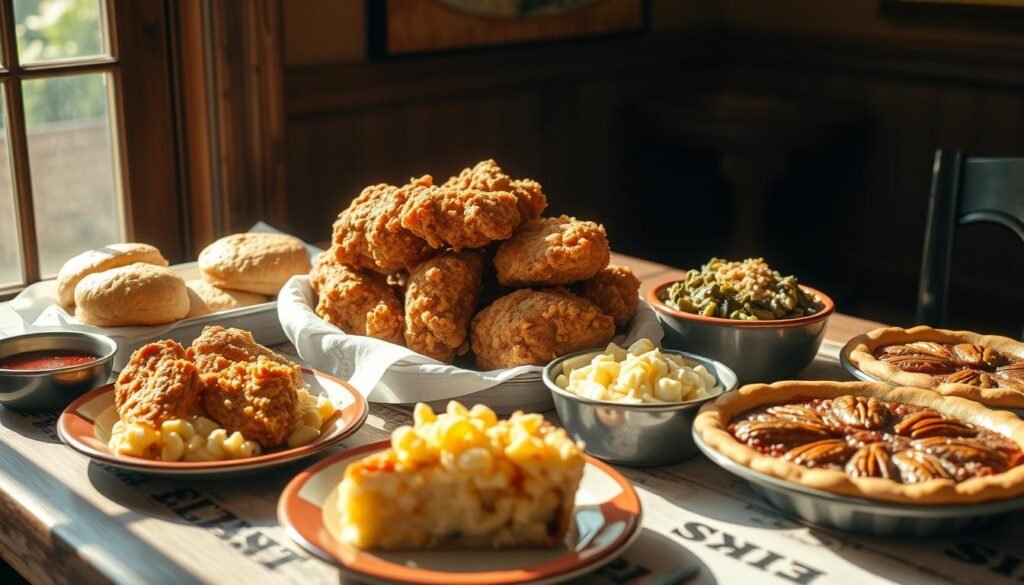
Exploring the local cuisine is an integral part of the New Orleans experience, especially after visiting the historic plantations. With its rich history, cultural diversity, and mouth-watering dishes, the region offers a culinary journey like no other.
Conclusion: Why You Should Experience Plantation Tours
As I reflect on the rich history and culture of New Orleans, it’s clear that plantation tours offer a unique window into the past. By exploring these historic sites, you’ll gain a deeper understanding of the complex events that have shaped this region.
The Power of Reflection
Reflecting on history is a powerful way to connect with the people and places that have made New Orleans what it is today. Through New Orleans plantation tours, you’ll have the opportunity to walk in the footsteps of those who came before, gaining a new appreciation for the region’s heritage.
Creating Lasting Memories
By experiencing these tours, you’ll create meaningful connections with the history and culture of New Orleans. Whether you’re a history buff, a culture enthusiast, or simply looking for a unique experience, New Orleans plantation tours are sure to leave a lasting impression.
As you plan your visit, I encourage you to take the time to immerse yourself in the beauty and significance of these plantations. You’ll leave with a newfound appreciation for the region and memories that will last a lifetime, forging meaningful connections that go beyond just a visit.
FAQ
What are the best plantation tours in New Orleans?
Some of the top-rated plantation tours include Oak Alley, Laura, Houmas House, and Whitney Plantation. Each offers a unique perspective on the region’s history and culture.
How long does a typical plantation tour take?
The duration of a plantation tour can vary, but most tours last around 1-3 hours, depending on the plantation and the type of tour you choose.
Are guided tours available, and are they worth it?
Yes, guided tours are available at most plantations, and they can be a great way to gain deeper insights into the history and significance of the plantation. Many guides are knowledgeable locals who can share stories and anecdotes that bring the history to life.
Can I visit multiple plantations in one day?
Yes, it’s possible to visit multiple plantations in one day, especially if you choose a guided tour that includes transportation between locations. However, it’s worth considering the travel time between plantations and planning your day accordingly.
Are the plantations near New Orleans family-friendly?
Yes, many plantations are family-friendly and offer activities and educational programs for children. Some plantations also have picnic areas or on-site dining, making them a great destination for families.
What should I wear when visiting a plantation?
It’s a good idea to dress comfortably and wear suitable shoes, as you’ll likely be doing some walking. You may also want to bring a hat, sunglasses, and sunscreen, especially if you’re visiting during the warmer months.
Can I take photos on the plantation tours?
Yes, photography is usually allowed on plantation tours, but be sure to respect any rules or restrictions in place to protect the historical sites and private areas.
Are there any special events or seasonal tours available?
Yes, many plantations offer special events and seasonal tours, such as holiday-themed tours or reenactments. It’s worth checking the plantation’s calendar to see what’s happening during your visit.
How do I get to the plantations from New Orleans?
You can get to the plantations by car, shuttle service, or guided tour. Many tour operators offer transportation from New Orleans, making it easy to visit the plantations without worrying about logistics.
Are the plantations accessible for visitors with mobility issues?
Many plantations have made efforts to improve accessibility, but it’s still a good idea to check ahead of time to ensure that the plantation you want to visit can accommodate your needs.
